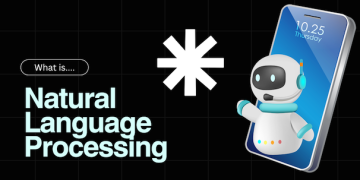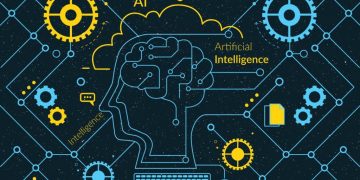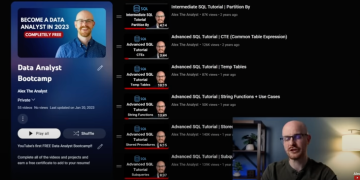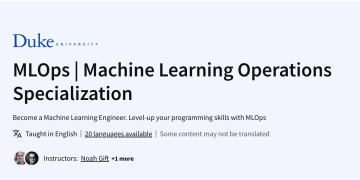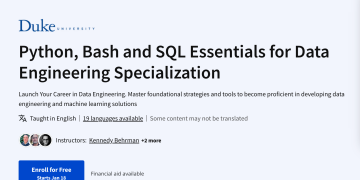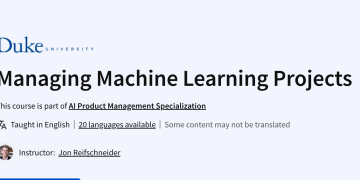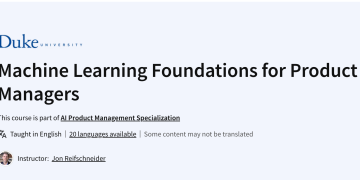Since the advent of computers, people have been using the word data to refer to computer information. But this is not the only definition of data; there are other forms of data as well. So what’s data? Examples of data include texts or numbers written on papers, or in form of bits and bytes within the memory of electronic devices, or it may be information stored within the mind of a human.
What is Data?
Data can be defined as a representation of facts, concepts, or instructions in a formalized manner, which should be suitable for communication, interpretation, or processing by a human or electronic machine. All software is divided into two main categories, programs, and data. Programs are a set of instructions that are used to manipulate data. So now that we have a detailed understanding of data and data science, let us explore some amazing facts.
Types and Uses of Data
Rapid growth in technology, especially in smartphones, has led to an increasing amount of text, video, and audio in data web and log activity records and most of this data is unstructured.
Qualitative Data Type
Qualitative or Categorical Data describes the object under consideration using a finite set of discrete classes. It means that this type of data can’t be counted or measured easily using numbers and therefore divided into categories. The gender of a person (male, female, or others) is a good example of this data type.
Quantitative Data Type
This data type tries to quantify things and it does by considering numerical values that make it countable in nature. The price of laptops, discount offered, number of ratings on a product, the frequency of processor of the laptop, or RAM of that particular system, all these things fall under the category of Quantitative data types.
How To Analyze Data?
Majorly, there are two ways to analyze the data:
- Qualitative Data Analysis
- Quantitative Data Analysis
1. Qualitative Data Analysis
This is characterized as data that approximates and characterizes the data. Qualitative data can be observed and registered. This type of data is non-numeric in nature. This type of data is obtained through observation techniques, one-to-one interviews, focus groups, and similar methods. Qualitative data in statistics is also known as categorical data – data that can be categorically ordered on the basis of the characteristics and properties of an item or a phenomenon.
Prominently, the process of data analysis in qualitative research is manual. Here the specialists, as a rule, read the accessible information and find monotonous or frequently utilized words.
Quantitative Data Analysis
Preparing Data for Analysis
The primary stage in data research and analysis is to do so for the purpose of a study, with the intention of turning nominal knowledge into something meaningful. The preparation of the data shall include the following.
- Data Validation
- Data Editing
- Data Coding
For quantitative statistical study, the use of descriptive analysis routinely offers the highest amount. However the analysis is never sufficient to demonstrate the logic behind those numbers. Still it is important to think about the best methodology to be used for study and interpretation of the data that suits your evaluation survey and what story specialists need to say.
As a result businesses ready to succeed in the hyper-competitive world must have a remarkable capacity to investigate complex research details, infer remarkable insight and respond to new business needs.
Reasons to Become a Data Scientist
- First up is the Healthcare Market. Data science is used here to examine medical images, biology, and genomics. It is also applicable to the production of medicines. And eventually, it’s a huge benefit to become a virtual patient assistant.
- The internet search is another application of data science. Both search engines use data science algorithms to show the desired result.
- Data Science is used to identify threats and fraud. Initially, data science was used in the financial sector and the most important use of data science continues to be the same.
- Many other applications of data science or artificial intelligence include targeted ads, advanced image recognition, speed recognition, airline route planning, virtual reality, and gaming, etc.
Top Jobs in Data
Few job titles that are high in-demand
1. Data Scientist
This is one of the most in-demand jobs right now, as evident from the previous section.
2. Database Developer
Third, in the list of the top 5 jobs in data is “database developer.” They are mainly focused on improving the databases and developing new applications for better use of data.
3. BIA
Business Intelligence Analysts help the companies to make fruitful decisions with the help of using data and making the required recommendations.
4. Database Administrator
The job of a Database administrator is to set up the databases then maintain and secure them at all times.
5. Data Analytics Manager
Nowadays, more and more companies are starting to rely on data managers to extract out the most useful information from massive amounts of data.



